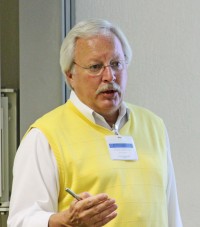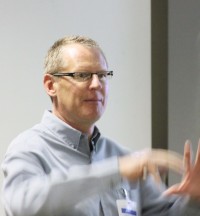The fourth Baseline Technical Review, held at CERN on 22 and 23 March, focused on conventional facilities and siting. All significant changes to the 2007 Reference Design Report (RDR) baseline were reviewed and evaluated for impacts on performance, cost and related systems. This was the last of the formal reviews of the Technical Design Report baseline, so the main activity now officially moves to producing the TDR by the end of 2012. Some further changes may still be incorporated as costing information becomes available or because of other new considerations over the coming months. However, we now consider the TDR baseline as established. The main task now is now to produce the report.
There has been a set of changes to the RDR baseline, many of which have impacts on the conventional facilities. For example, we have changed to a single excavated tunnel for all sites, changing the tunnelling requirements; the electrical and mechanical loads are changed; the damping rings have been reduced in size, reducing the amount of tunnel required; the interaction region configurations and requirements are better defined; and a detector platform and moving system has been defined. Other systems have been refined and the better information is being used for the TDR costing.
One change that became obvious sitting through these conventional facility TDR reviews is how the design and issues have become more refined and the ways in which the detailed solutions are site-dependent. At the time of the RDR, we expected to see differences between sites and, for that reason, we asked and received a sample site from each region (Europe, Asia and the Americas). But in fact, at that time our knowledge of technical details and sites was limited, so we presented one design that would be used in any of the three sites. For the TDR design, many technical features are site-dependent. That means both the technical solutions (for example, distribution of high-level radiofrequency (RF) power), and the tunnelling and other solutions are site-dependent, even the shape of the underground tunnels. This leaves us grappling with the dilemma of how to present the multiple schemes we have studied. I will discuss this issue further, as we decide how to best handle these variations in the design in the TDR.
The conventional facility designs as presented for each region are considerably more detailed, especially regarding the mechanical, electrical and safety systems. A very productive pre-meeting was held on 21 March, reviewing with industrial consultants the detailed electrical and mechanical systems, and taking advantage of the expertise and experience that exists at CERN. Representatives from the Asian region presented mechanical and electrical designs that have been developed using the Asian region high-level RF system that are suitable for a mountain site in Japan. Representatives from the Americas region presented mechanical and electrical designs that have been developed for the klystron cluster RF system for the Americas sample site.
In addition to the changes and refinements discussed above, there is a much better understanding of the interaction region and of how to compatibly incorporate the two detector groups’ “Letters of Intent” in a push-pull scheme to enable alternating which detector is on the beamline. I will address this whole region and the present concept and issues in a separate column.





Recent Comments